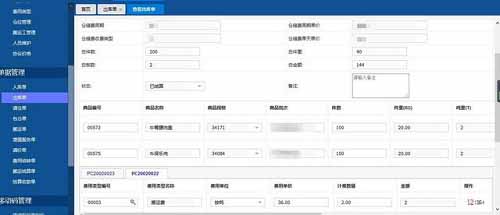Inventory of common functional modules of cold storage management system
With the increasing number of customers and the increase in the number of orders, cold storage companies have gradually discovered that manual implementation of the internal management of the cold storage will affect the accuracy and efficiency of the number of orders, and also affect the development and progress of the cold storage companies. Therefore, many cold storage companies need a mature cold storage management system to improve the efficiency of cold storage management, save labor costs, and improve service levels.
Standard collar cold storage management system adopts barcode technology development, B/S structure, consignor management, storage location management, expense management, cold storage leasing, document management, mobile code management, warehouse management, warehouse transfer management, expense settlement management, commission management , Report management and mobile terminal operation and other functional modules in one. Combined with PDA equipment, it can automatically collect the data of each operation link and upload it to the system backend for easy viewing, so as to manage the cold storage inventory reasonably, improve the service experience of the cargo owner, and strengthen the execution of the supply chain.

Function analysis of cold storage management system
1. Consignor management: The system can manage multiple consignors, and allows consignors to check their current inventory quantity and warehousing status.
2. Location management: rationally divide the cold storage area and location, establish a unified location database, so that the daily operation process is smooth, the cold storage will not appear too crowded and chaotic, and the income will increase a lot.
3. Expense management: You can customize the expenses incurred in cold storage management, such as disposal fees, handling fees, stretch film fees, distribution fees, overtime fees, and other types of expenses.
4. Refrigeration lease: The cost of refrigeration for the cargo owner can be calculated by tons, pieces, boards, and it also supports the warehouse model, which is divided into daily and monthly billing, and inventory can also be managed.
5. Document management: The daily billing process can be operated and printed on the system, which avoids handwriting errors and facilitates subsequent query, verification and statistics.
6. Mobile code management: The mobile code number can be automatically generated, and then the label can be printed out through the bar code printer and pasted on the corresponding batch of goods to realize one code one product management, which is convenient for subsequent warehouse operations.
7. Inbound and outbound management: Using PDA handheld devices, employees can accurately and quickly complete the operations of receiving, putting on shelves, unloading, and unloading, including the location guide when putting on the shelf, or they can choose by themselves. When removing the shelf, the warehouse will prompt and reduce Rely on manual experience to improve the efficiency and accuracy of the warehouse.
8. Commission management: By setting the accrual standard for each employee, the tonnage of each employee and the corresponding commission amount can be automatically calculated to increase the enthusiasm of the employees.
9. Billing management: Every day after the goods in the warehouse or the warehouse starts, refrigeration costs will be incurred. It can automatically calculate the cold storage costs and operating costs of the cold storage customers, and flexibly settle the arrears that need to be collected.
10. Report management: A variety of business reports are automatically generated, including the details and summary of the owner's inventory, warehousing, total cost, warehouse inventory, and warehousing details and summary.
11. Mobile terminal operations: Using PDA, employees can quickly complete mobile code binding, warehousing, outgoing, warehouse relocation, and location inventory query operations, which reduces the workload of employees and improves accuracy.


